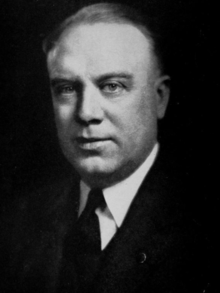Raymond E. Baldwin | |
|---|---|
 | |
| Associate Justice of the Connecticut Supreme Court of Errors | |
| In office 1949–1959 | |
| United States Senator from Connecticut | |
| In office December 27, 1946 – December 16, 1949 | |
| Preceded by | Thomas C. Hart |
| Succeeded by | William Benton |
| 72nd & 74th Governor of Connecticut | |
| In office January 6, 1943 – December 27, 1946 | |
| Lieutenant | William L. Hadden Wilbert Snow |
| Preceded by | Robert A. Hurley |
| Succeeded by | Wilbert Snow |
| In office January 4, 1939 – January 8, 1941 | |
| Lieutenant | James L. McConaughy |
| Preceded by | Wilbur Lucius Cross |
| Succeeded by | Robert A. Hurley |
| Majority Leader of the Connecticut House of Representatives | |
| In office 1933 | |
| Member of the Connecticut House of Representatives | |
| In office 1931-1933 | |
| Personal details | |
| Born | Raymond Earl Baldwin August 31, 1893 Rye, New York, U.S. |
| Died | October 4, 1986 (aged 93) Fairfield, Connecticut, U.S. |
| Political party | Republican |
| Spouse |
Edith Lindholm
(m. 1922; died 1970) |
| Children | 3 |
| Education | Wesleyan University Yale Law School (LL.B.) |
| Profession | lawyer, politician, judge |
| Military service | |
| Branch/service | |
| Years of service | 1918–1919 |
| Rank | |
| Battles/wars | World War I |
Raymond Earl Baldwin (August 31, 1893 – October 4, 1986) was an American politician who served as a United States senator from Connecticut and also as the 72nd and 74th Governor of Connecticut. A conservative Republican, he was elected governor of Connecticut in 1938 during a Republican landslide promising a balanced budget, government aid to private business, and lower taxes. He sharply cut the state budget, producing a million dollars surplus. He was defeated for reelection in 1940, but was elected governor again in 1942 and 1944. He supervised a complex system of civil defense and statewide services on the homefront during the war. He planned an elaborate program to deal with the postwar reconversion of Connecticut's many warplane and munitions plants. He was elected to the Senate in the Republican landslide of 1946. As a spokesman for the small businesses of America, he compiled a conservative record in favor of less regulation, except for more regulation of labor unions through the Taft–Hartley Act. As chairman of a subcommittee of the Armed Services committee, Baldwin engaged in a long-running dispute with Wisconsin Senator Joseph McCarthy. McCarthy alleged that Baldwin was whitewashing an episode in which Army prosecutors in 1944 gained the death penalty for German soldiers accused of massacring Americans at the Malmedy Massacre. Exhausted by the highly publicized controversy, Baldwin resigned from the Senate in December 1949 to become a state judge.[1]
- ^ Eleonora W. Schoenebaum, ed. Political Profiles: The Truman Years (1978) pp 18-19